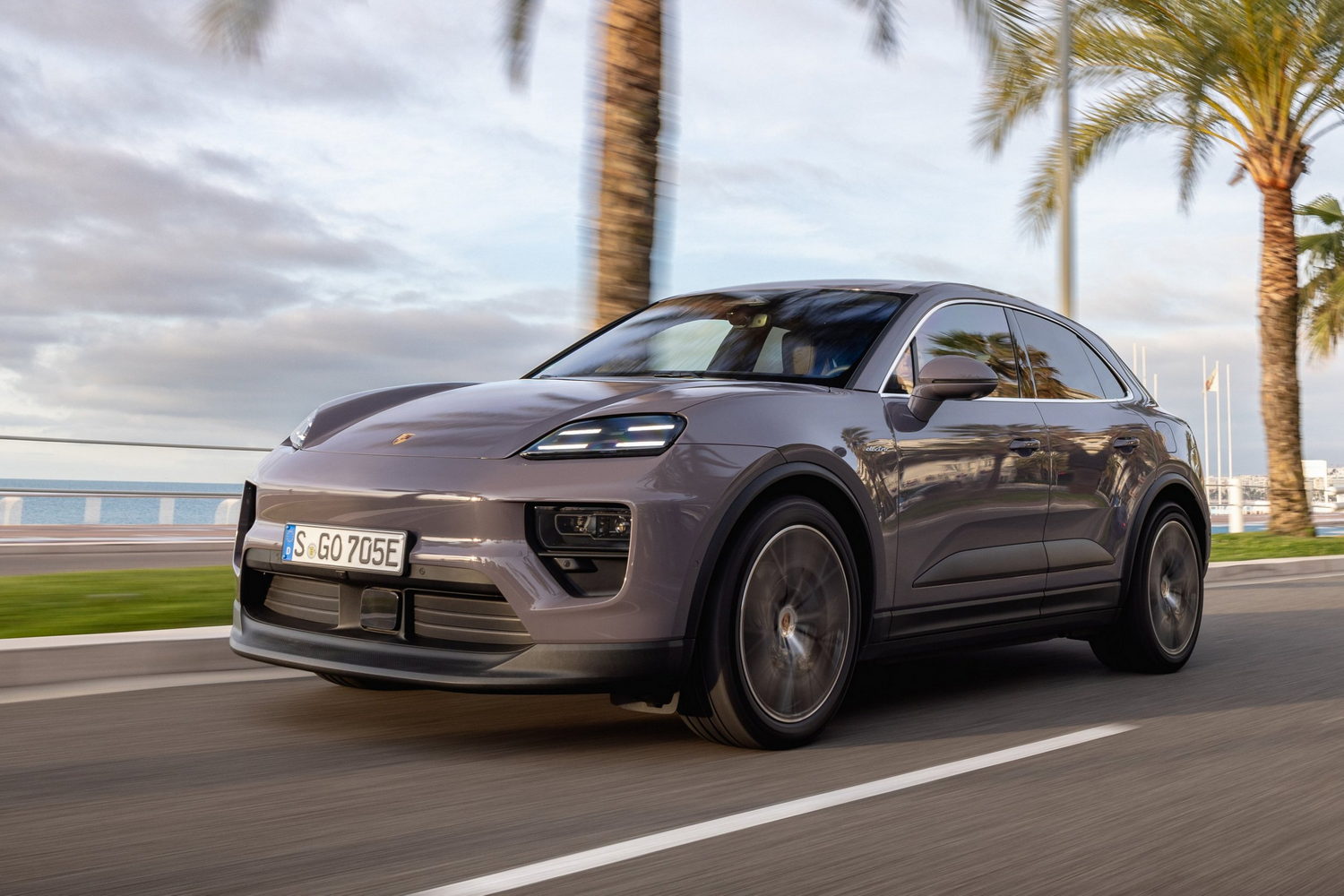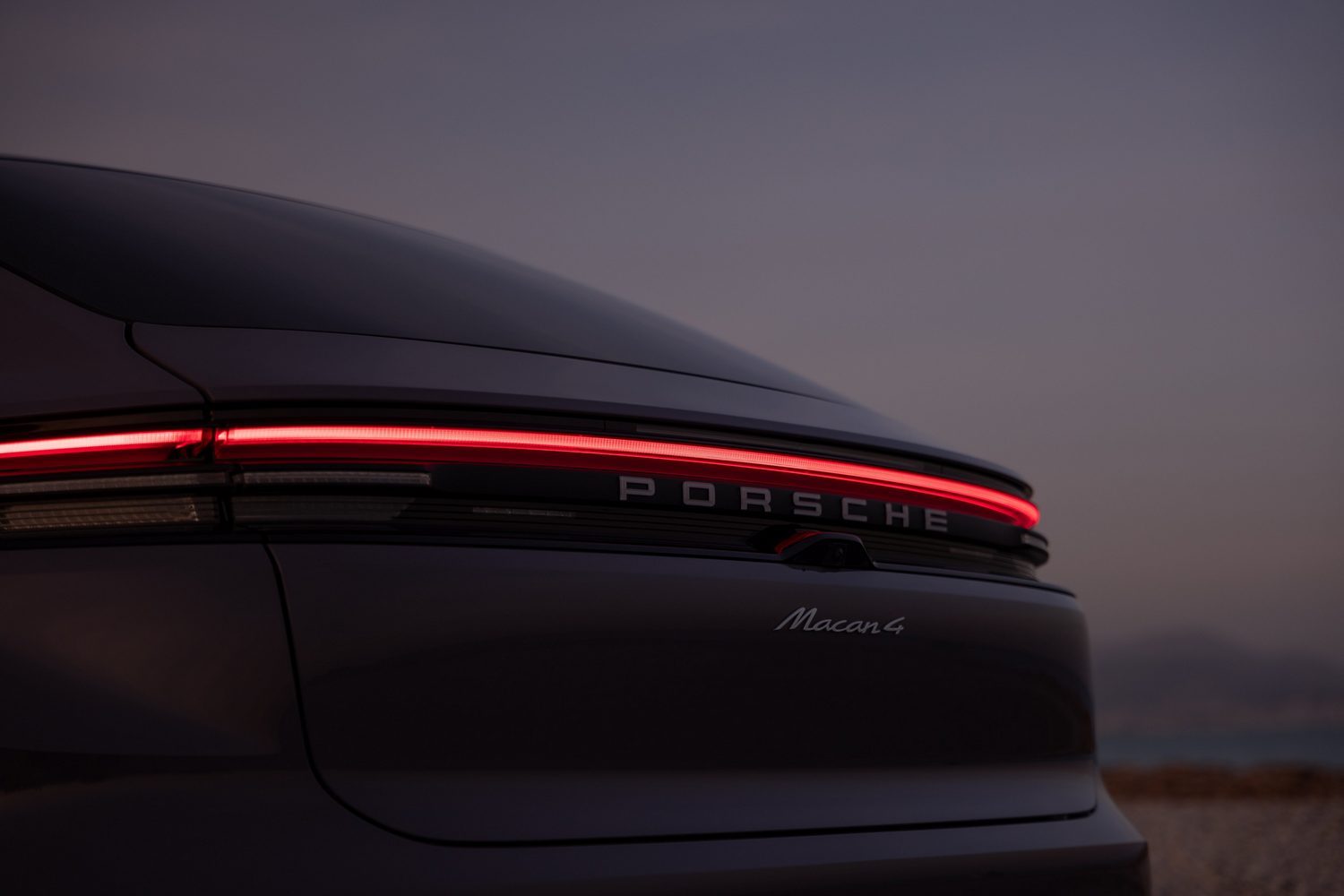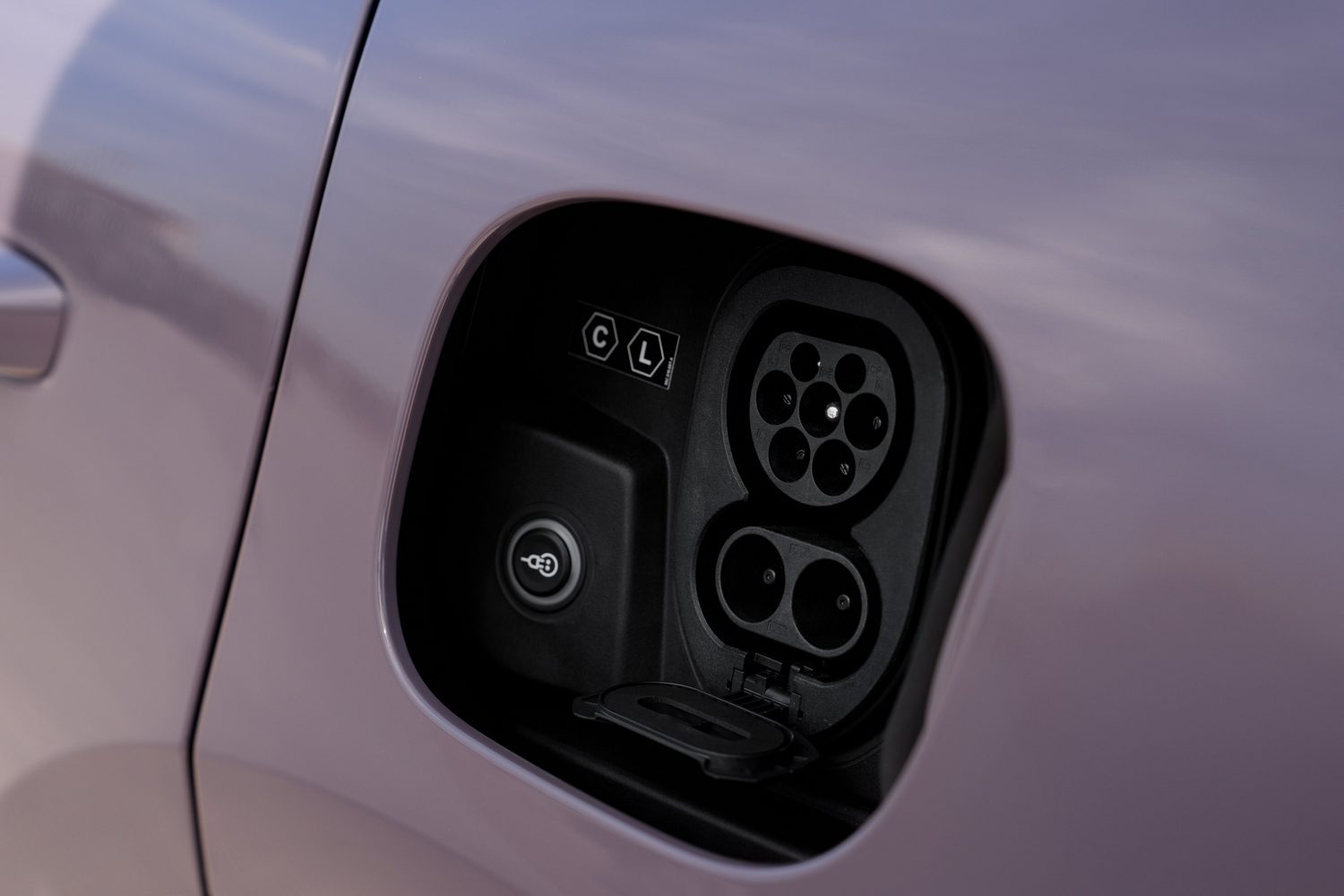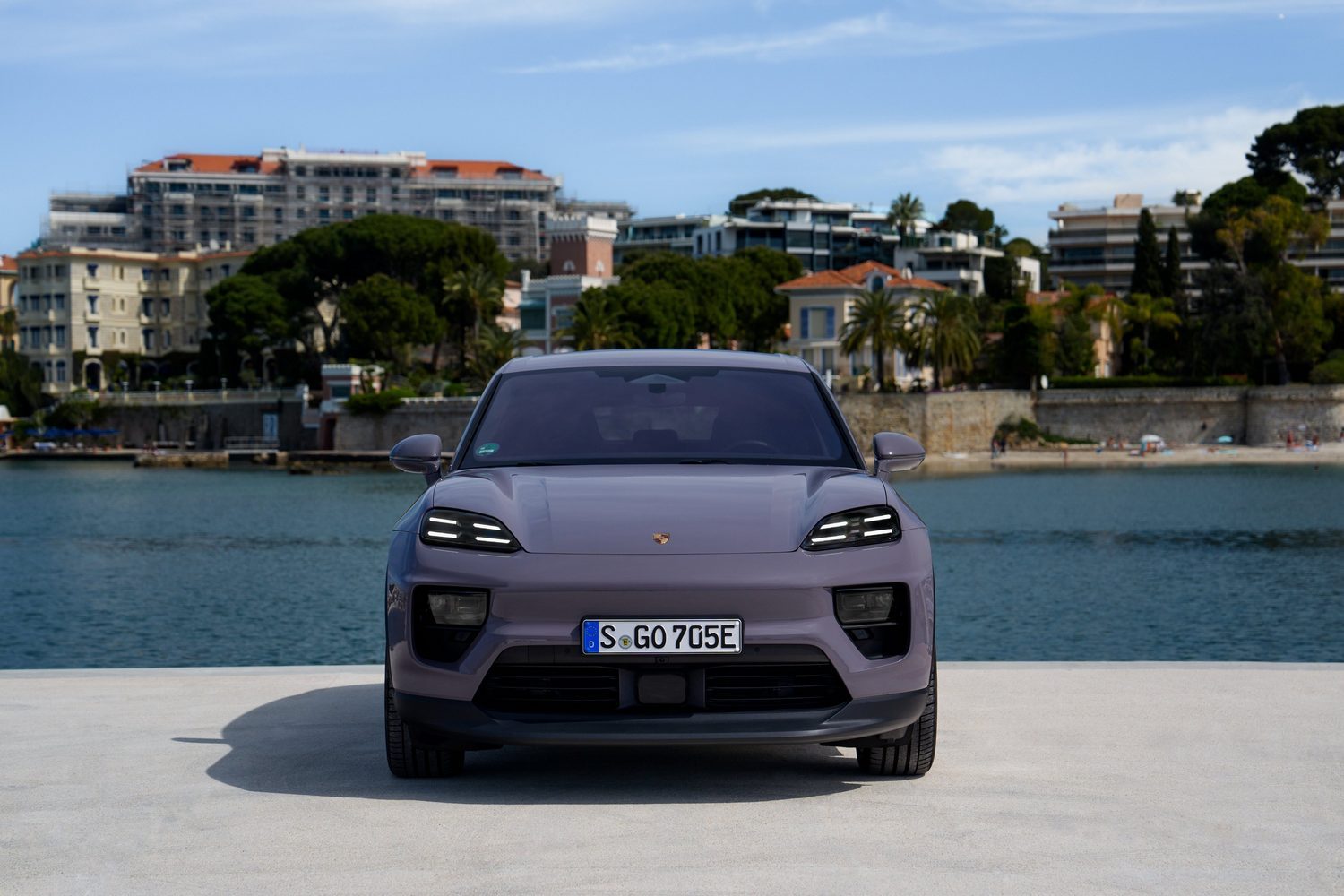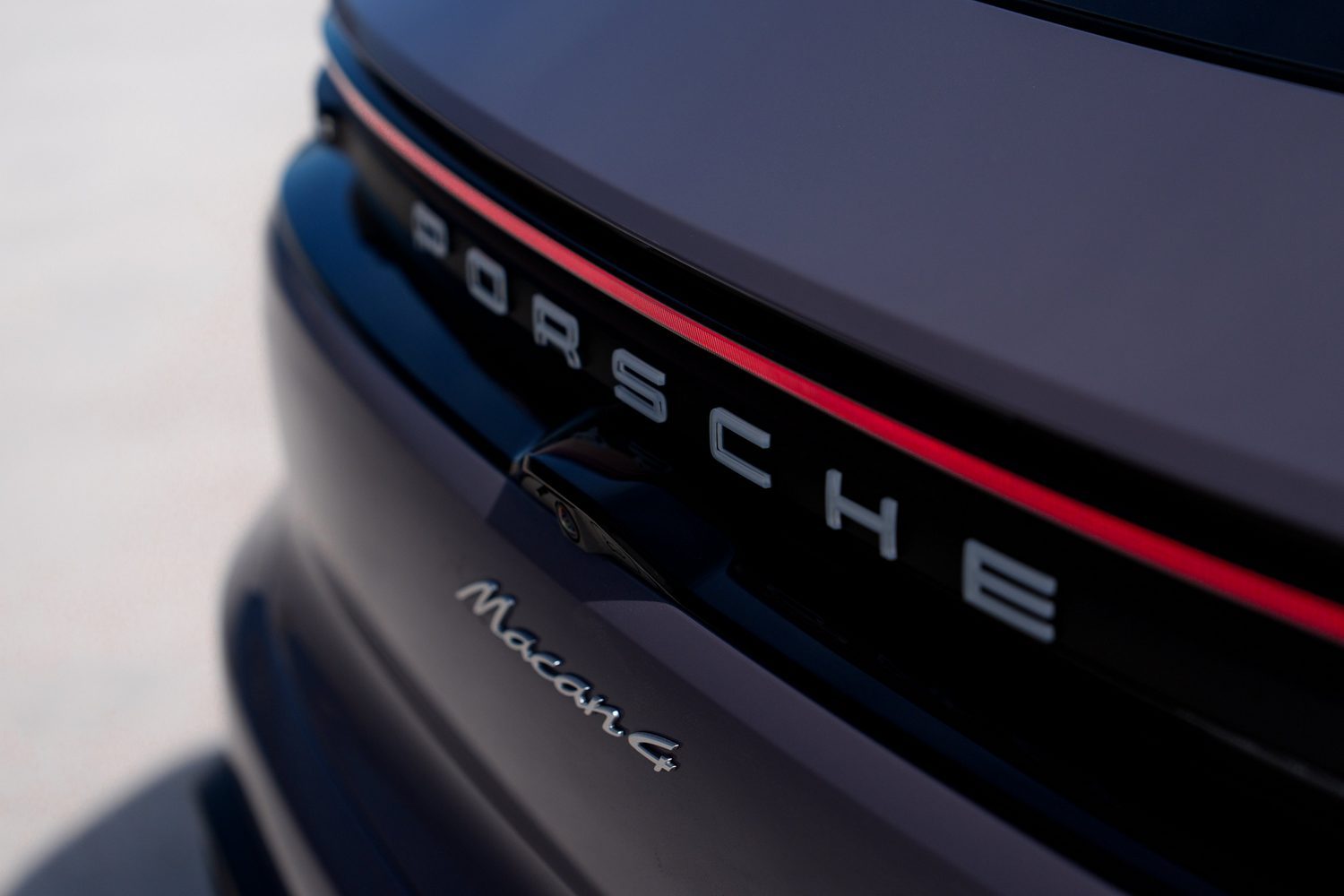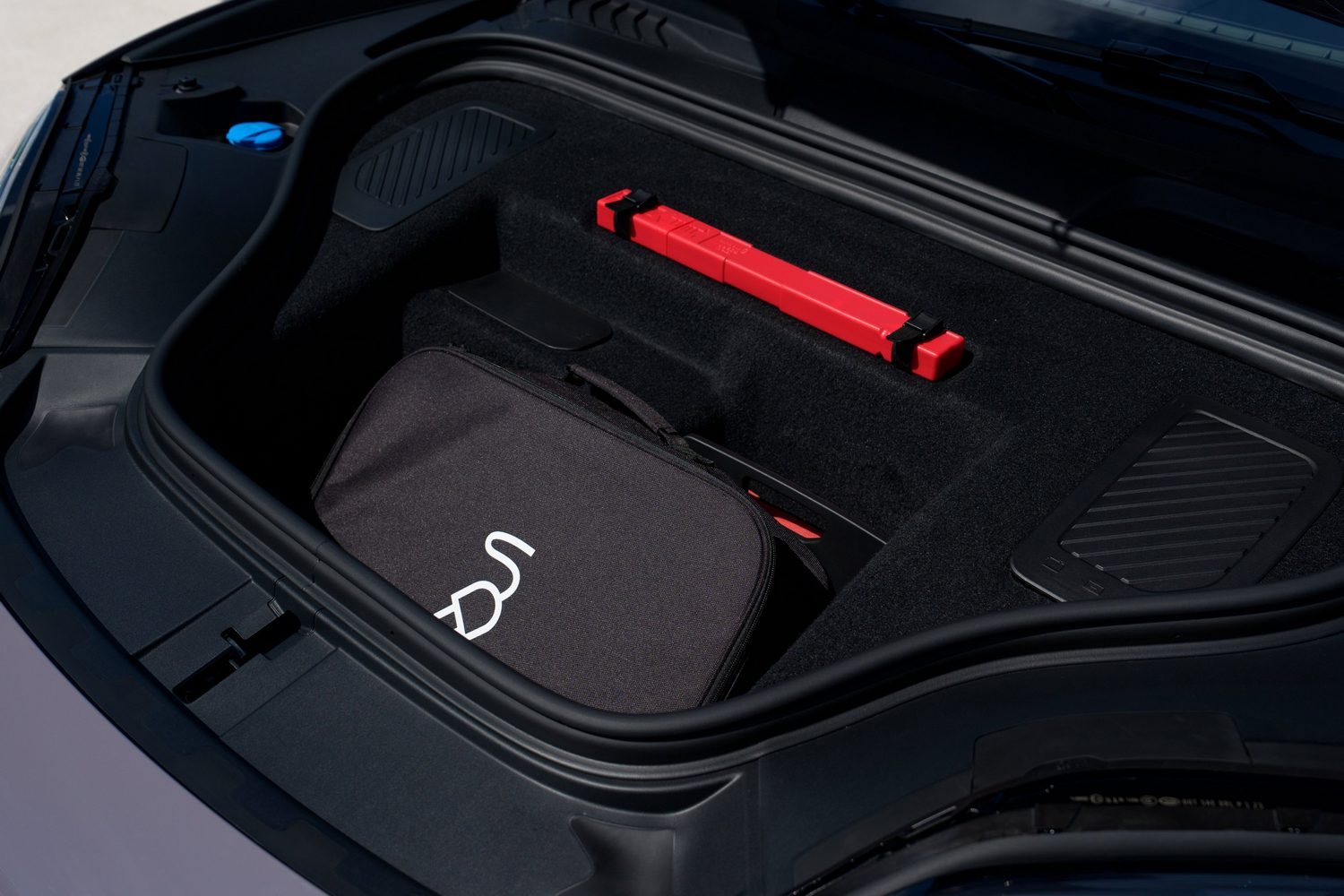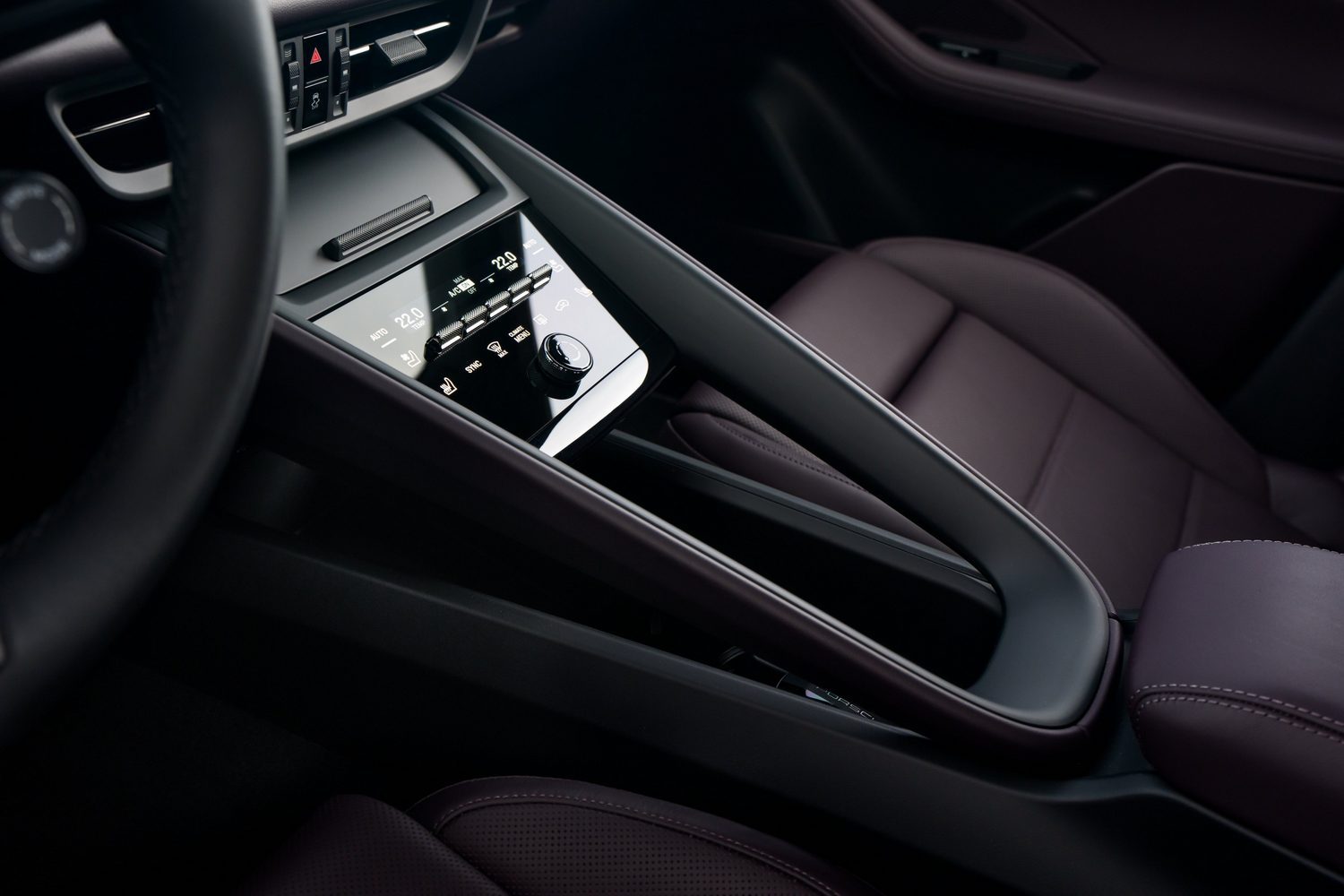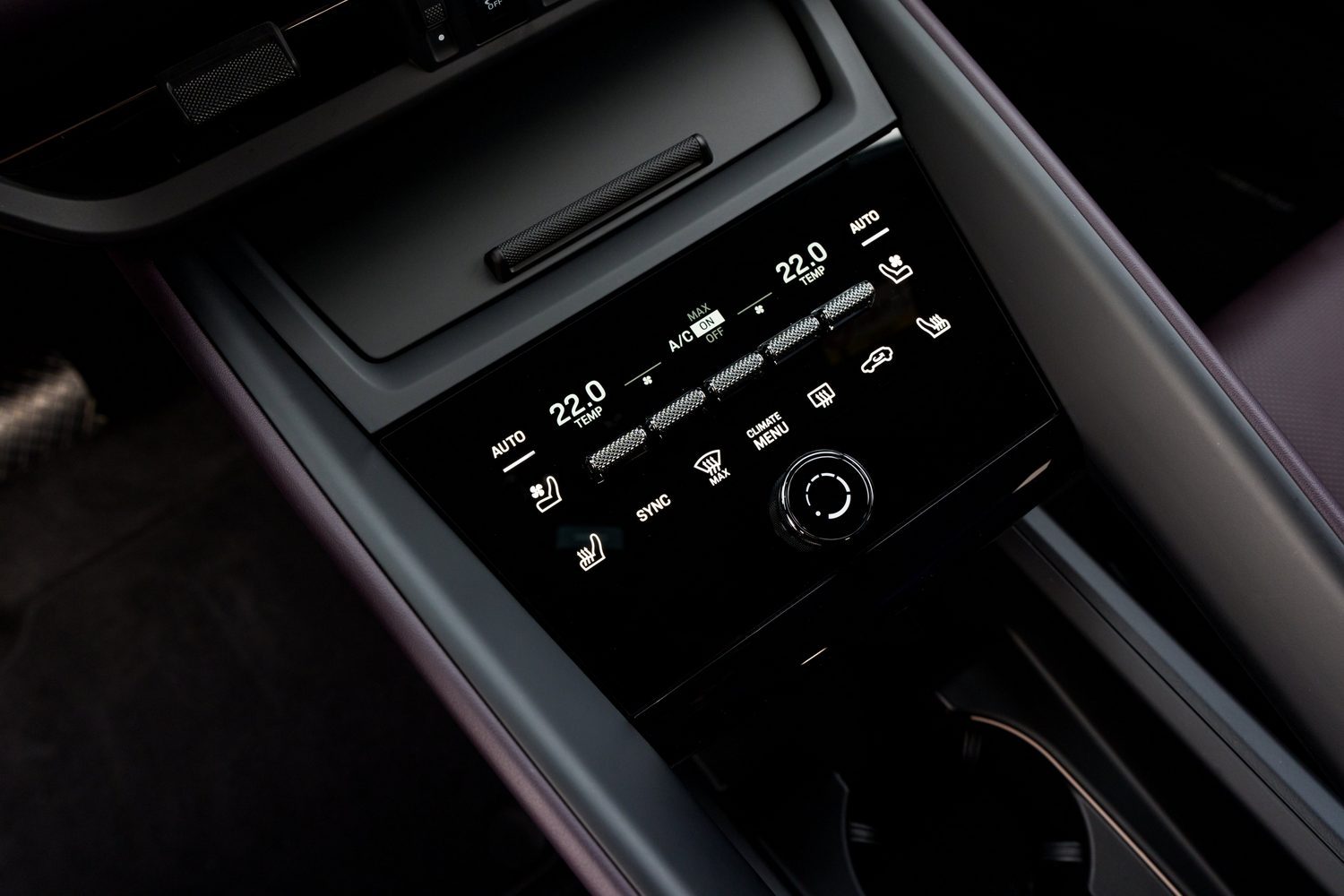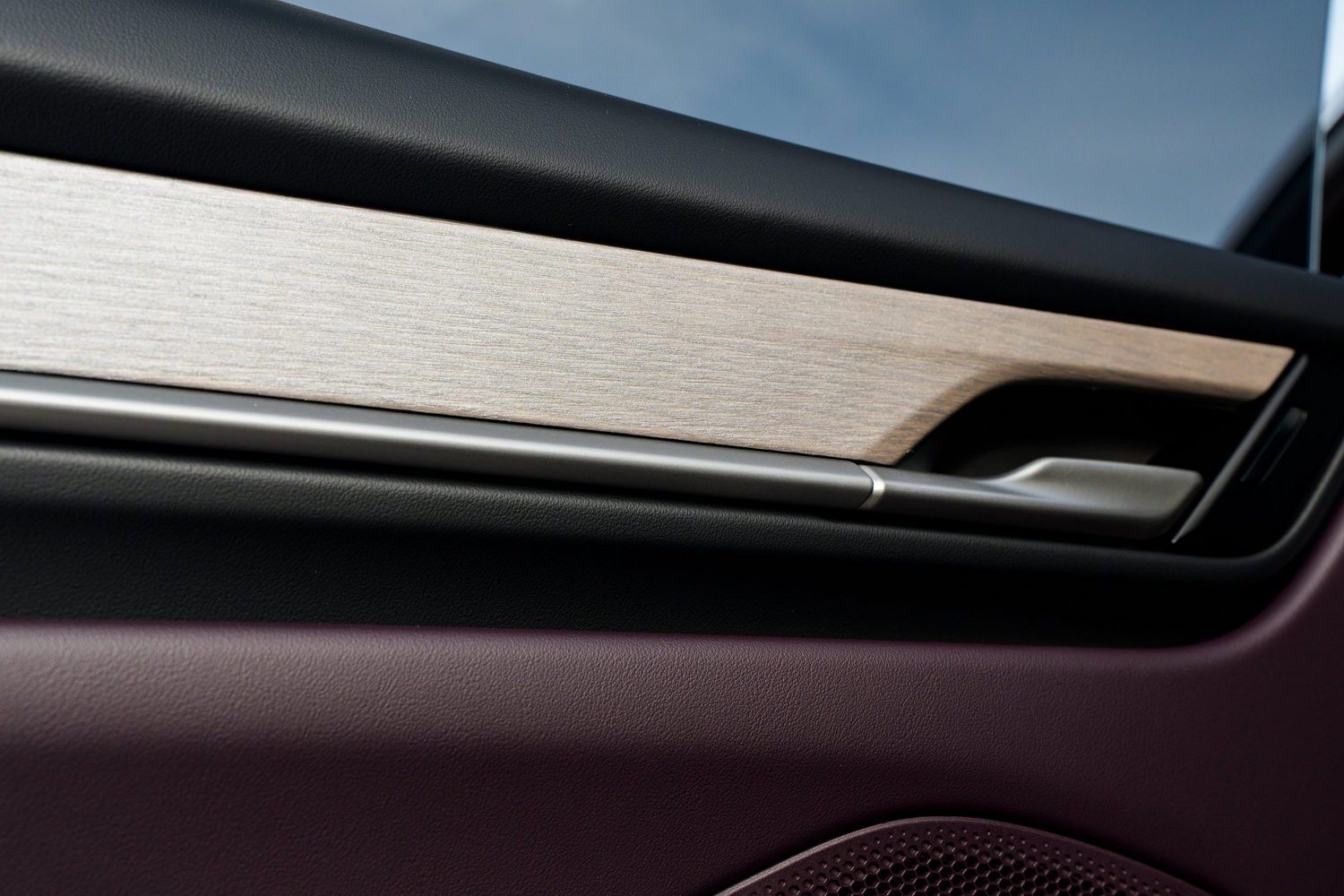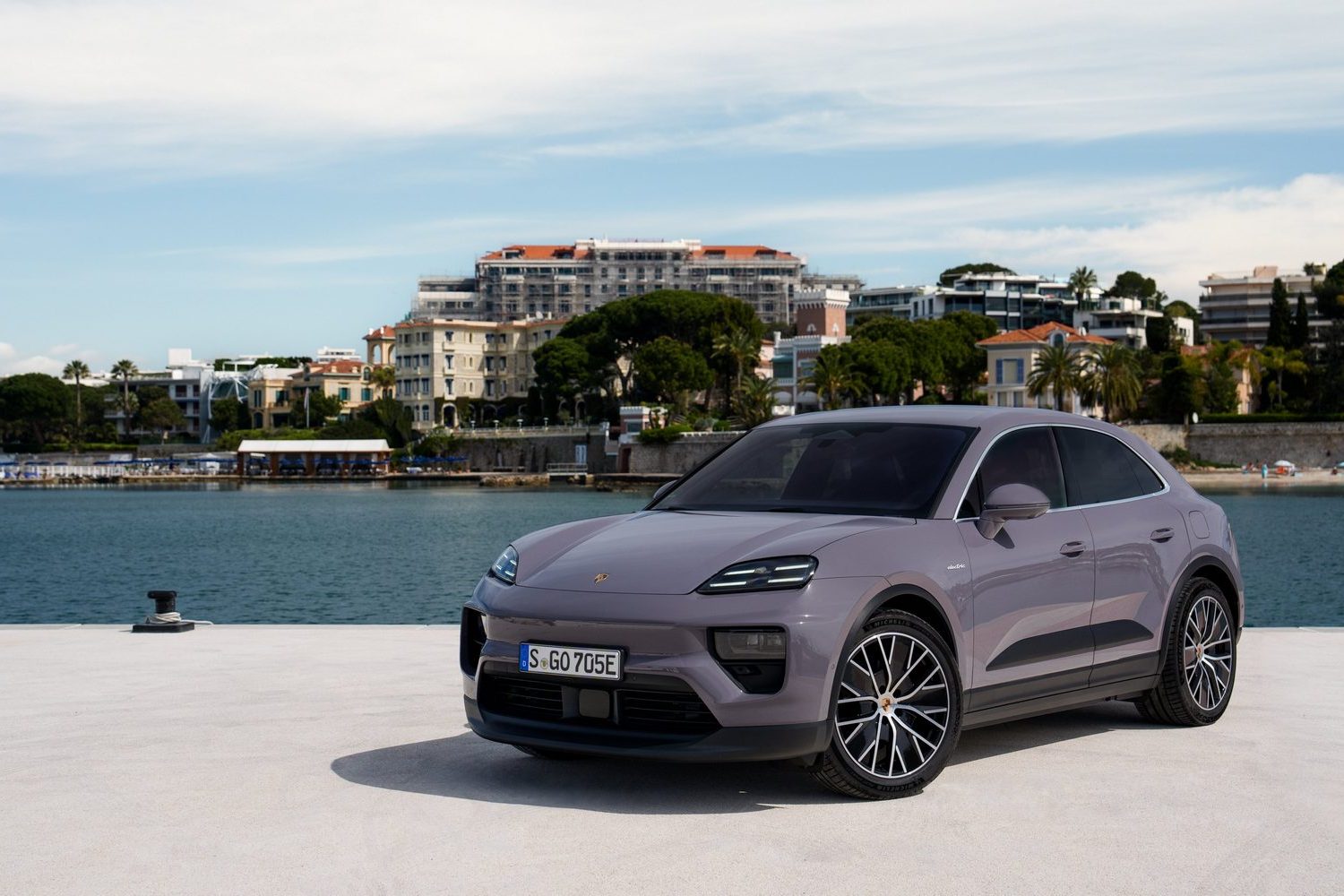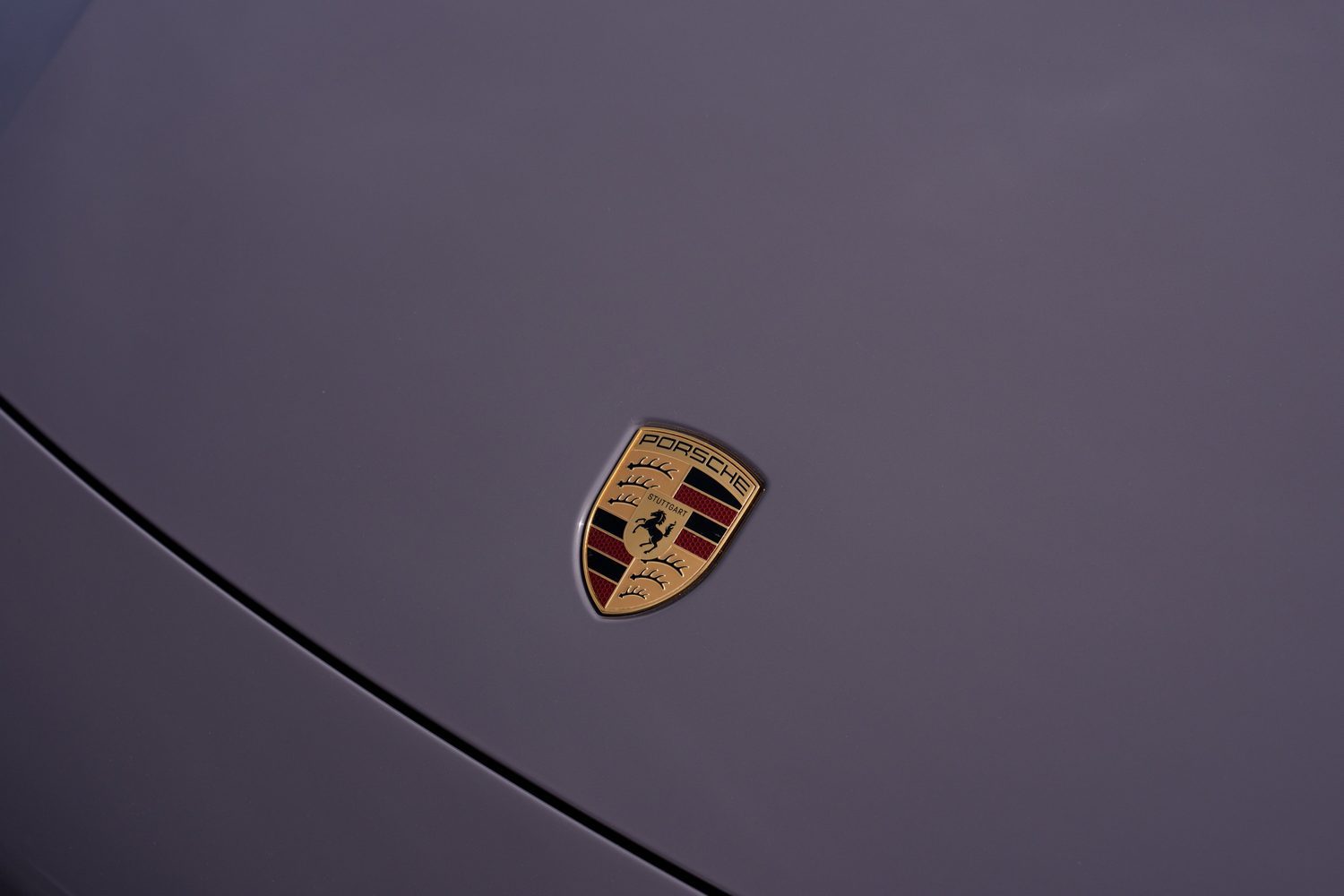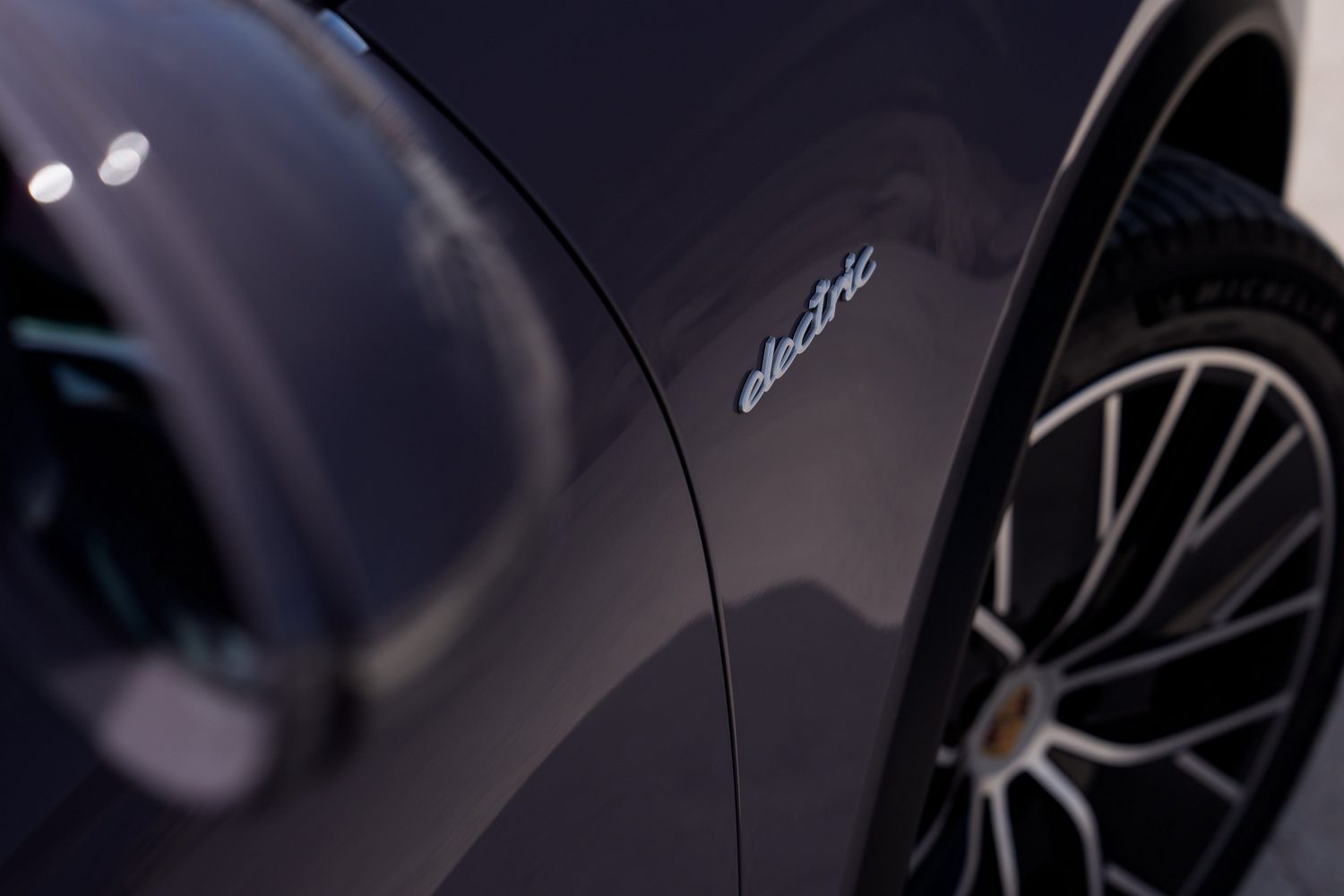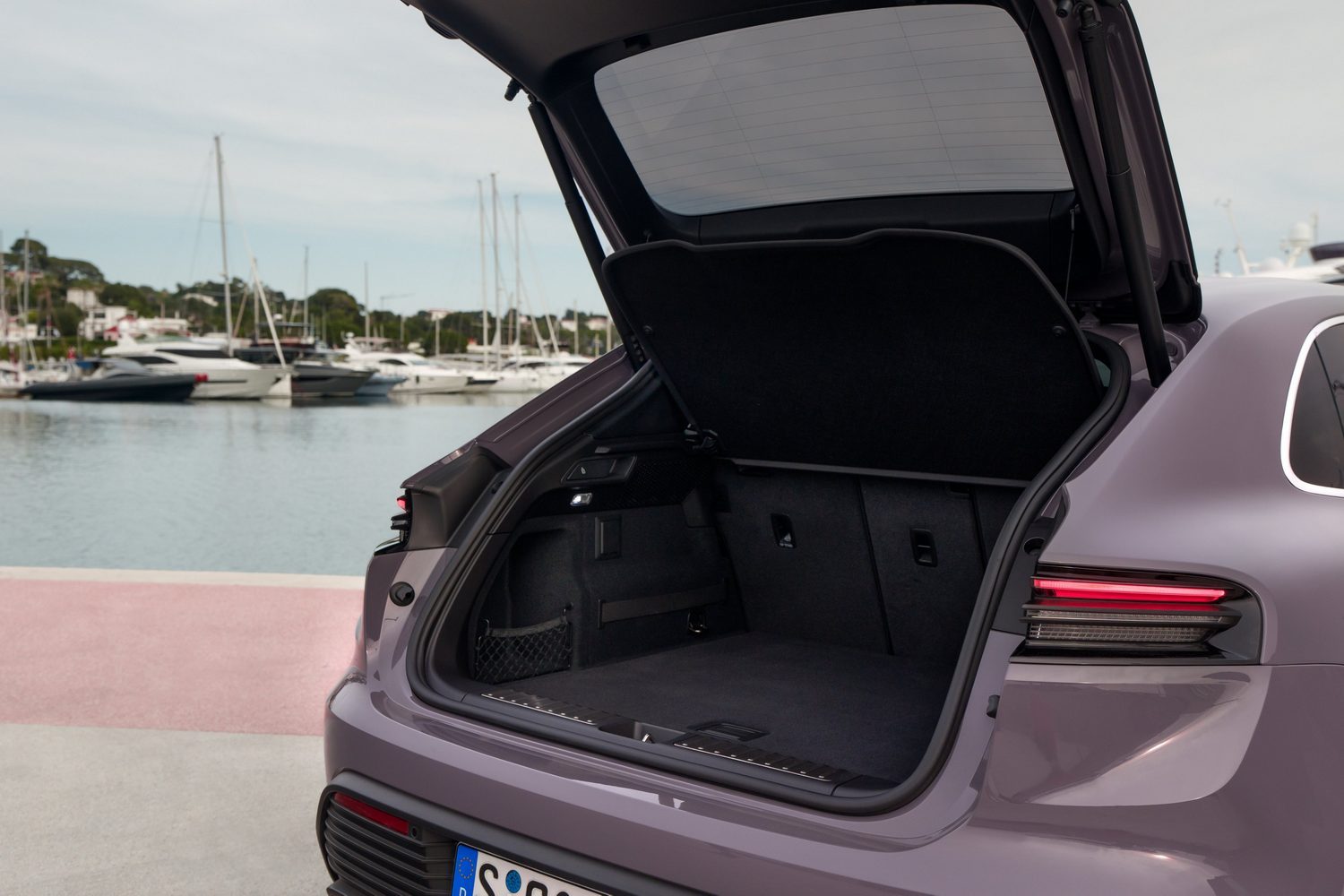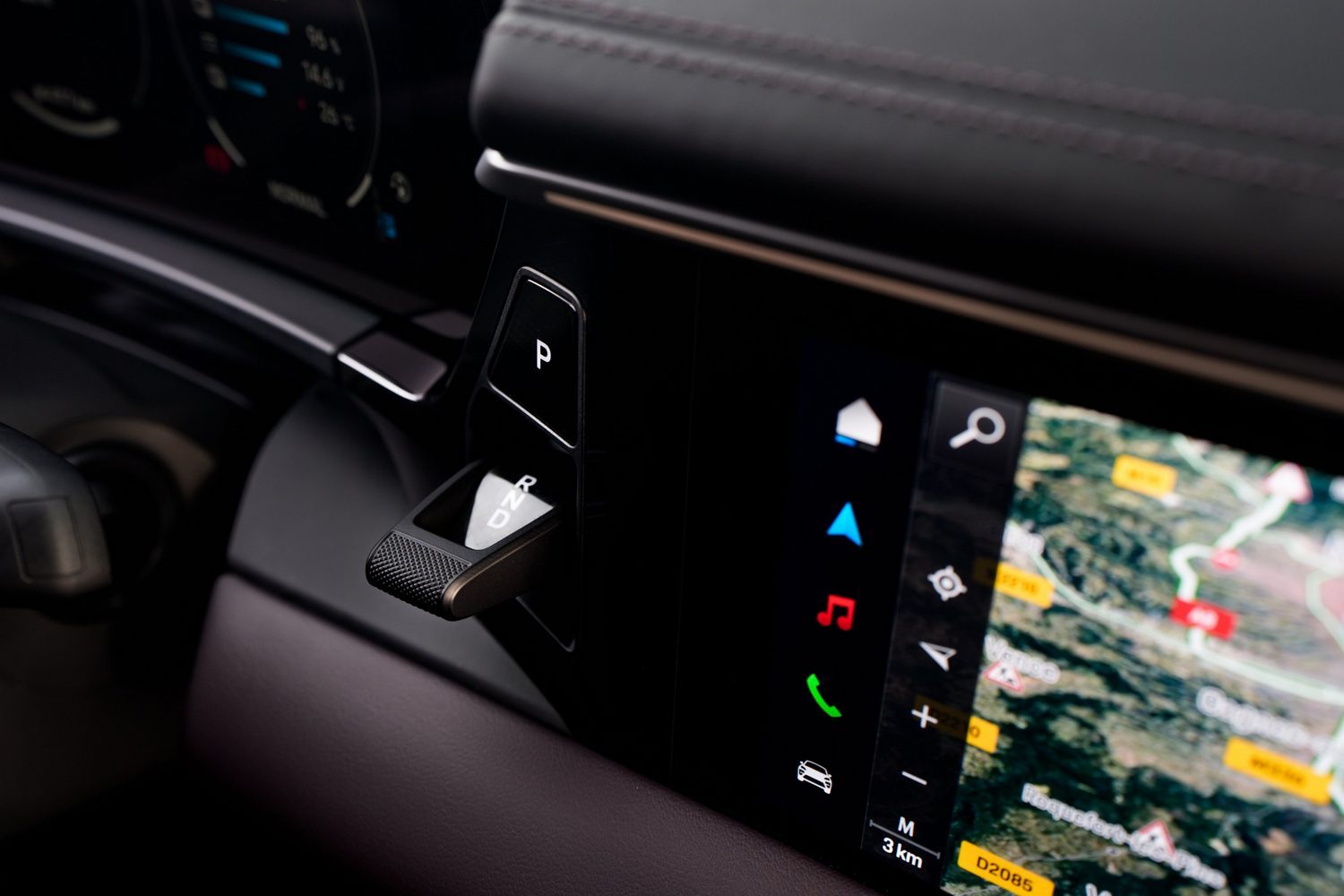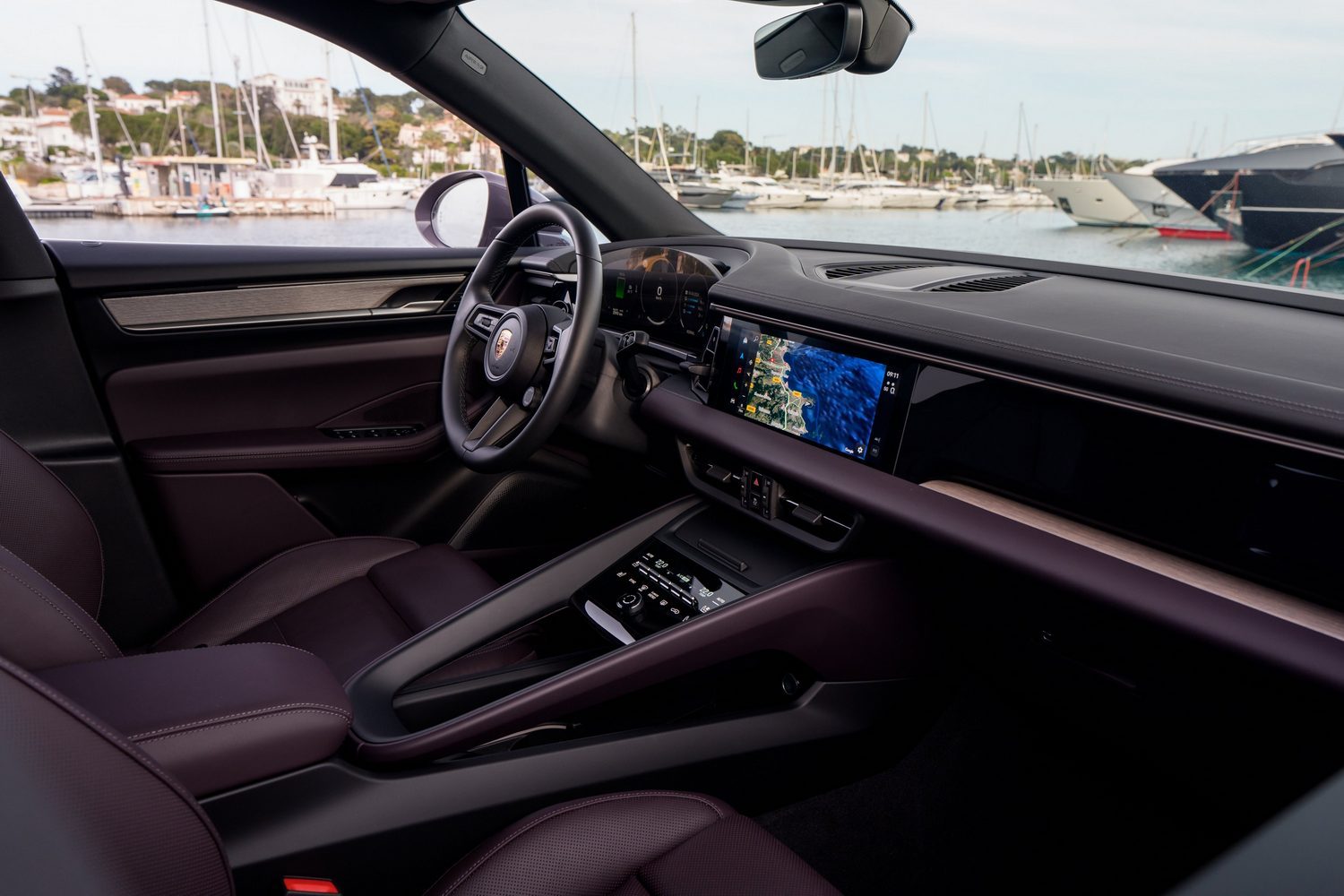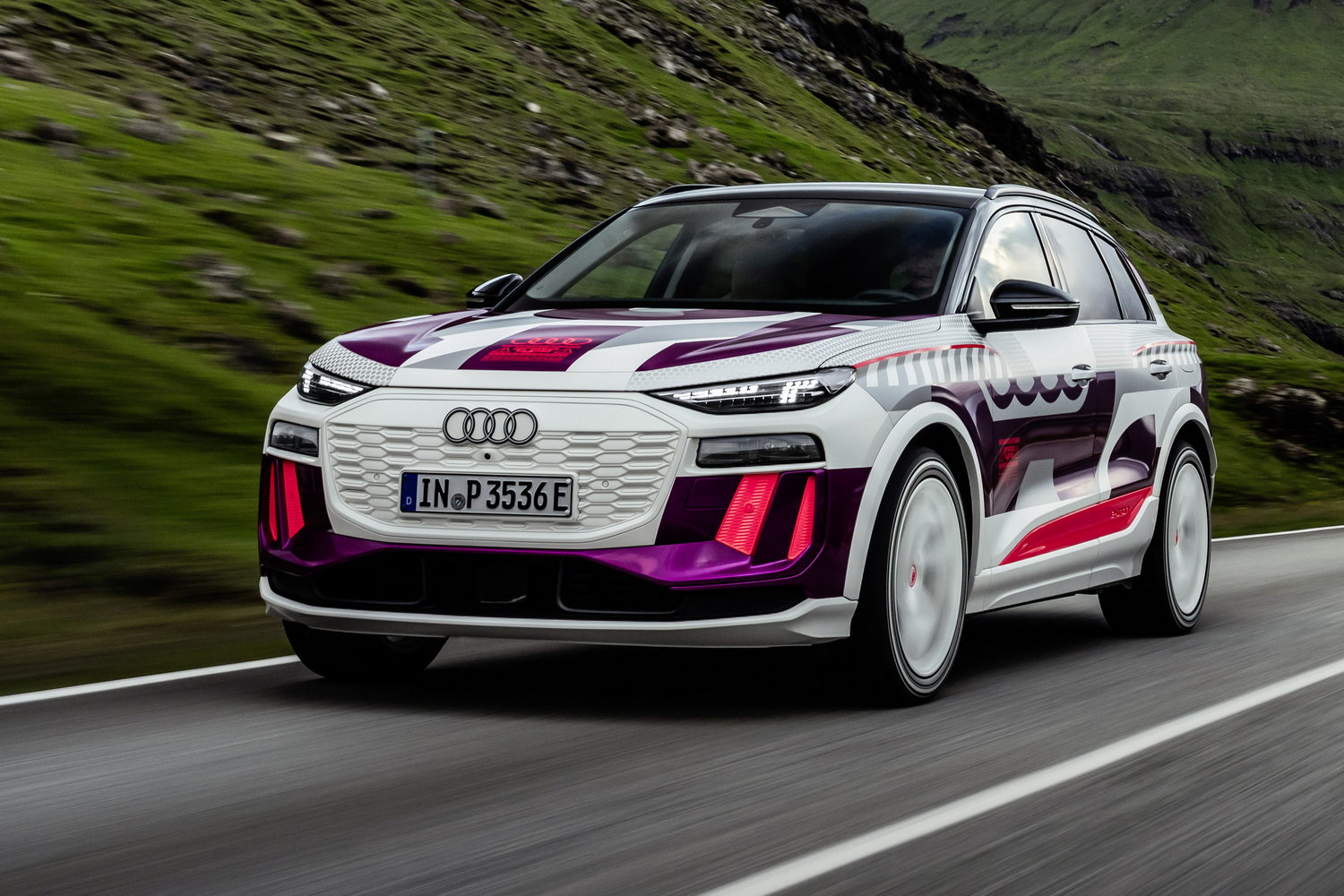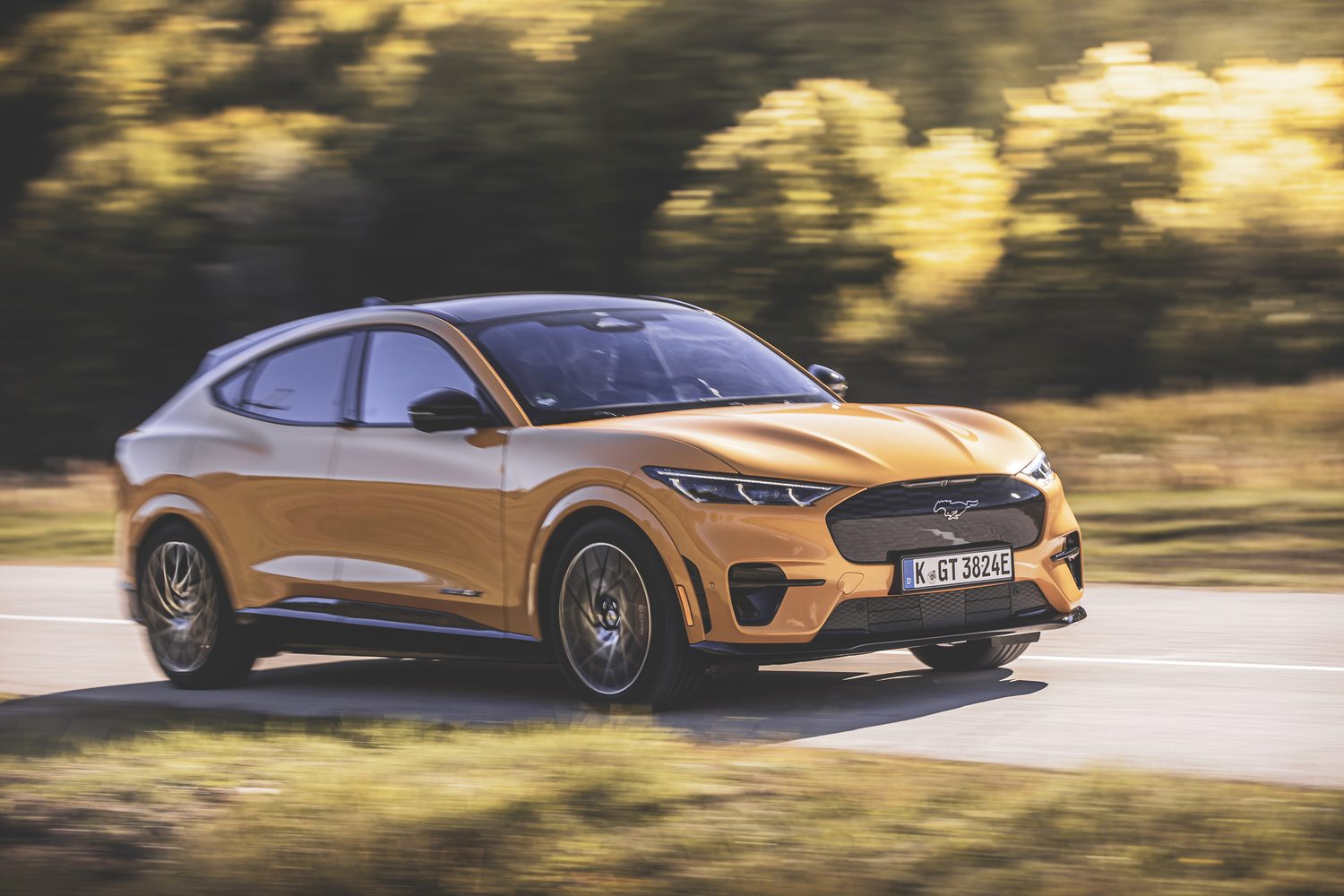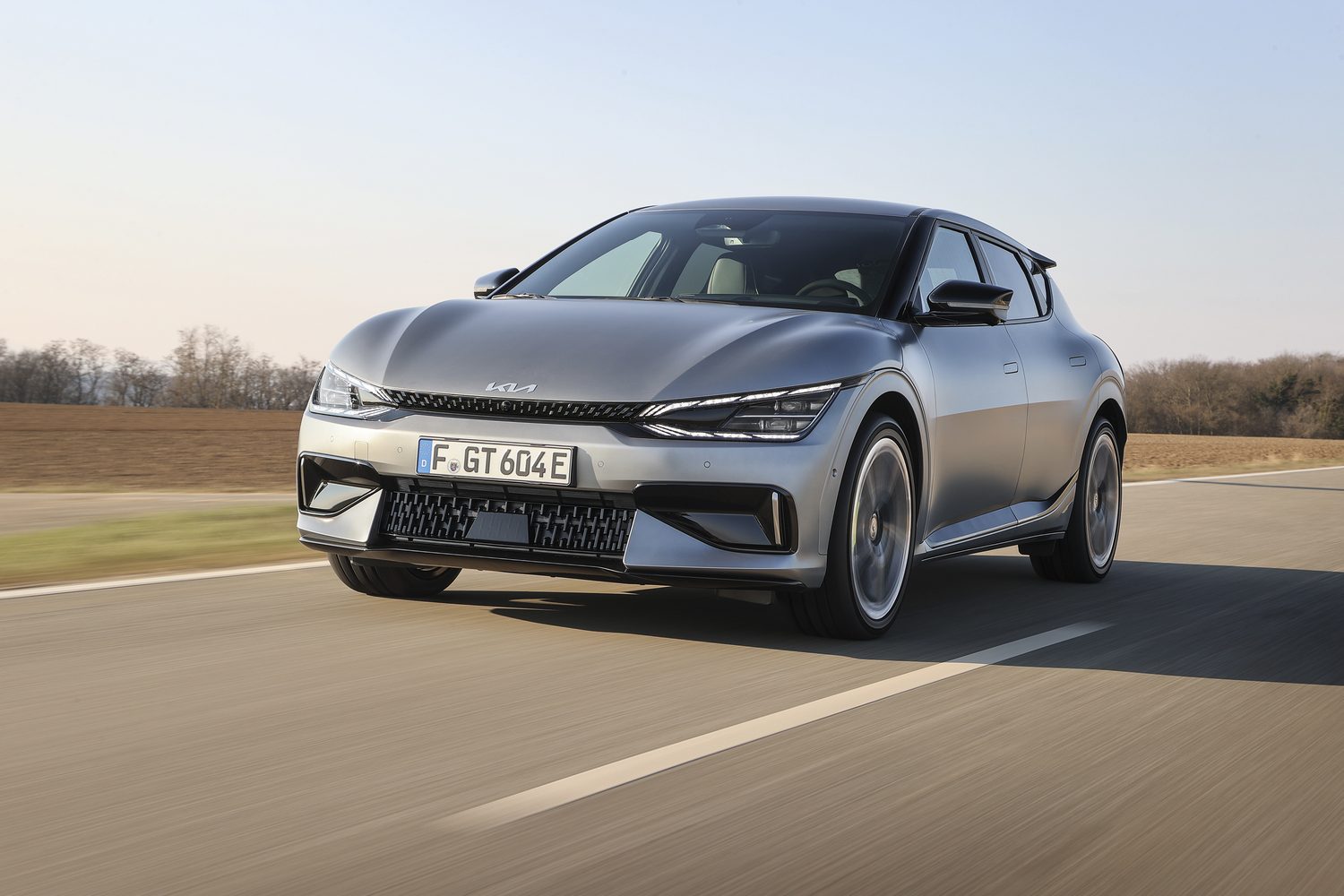Porsche’s move to electrification continues apace as it launches its second EV, the new, all-electric Macan. The arrival of the battery-powered SUV is arguably more important to the German company’s bottom line than the Taycan before it as the Macan has proven to be the most popular model it sells. Going electric, the new Macan is better suited to the Irish taxation system, meaning the ‘entry-level’ Macan 4 tested here is actually the most affordable new Porsche offered in Ireland. Don’t believe for a second this means it’s any less a car, however.
In the metal
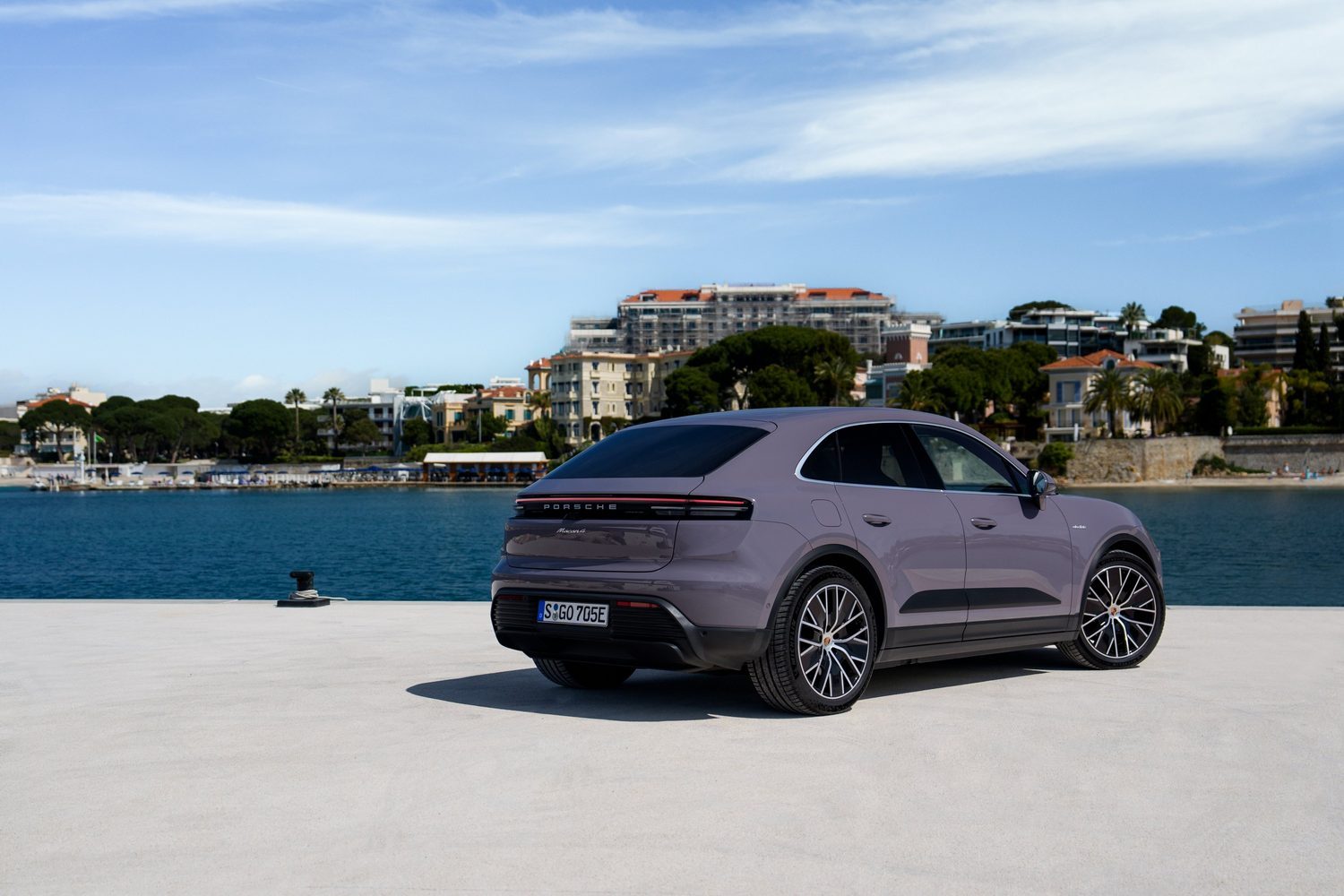
Even non-car people can tell the new electric Macan is a Porsche, as it adopts design cues front and rear from the rest of the range. Notably, while it’s an all-new car, it’s also still clearly a Macan. That, no doubt, was important given the success of the existing model. Up front, the smooth nose features gently-rising wings from a recessed central section, emphasising the four-point daytime running lights. The main headlights are actually the rather anonymous lower lamp units, neatly incorporated with the ‘air curtain’ intakes ahead of the front wheels. Those are part of a suite of aerodynamics measures designed to make the new Macan as slippery as possible through the air to reduce drag and extend range. The quoted coefficient of drag is as low as 0.25.
A more-sloped rear differentiates the electric Macan from the petrol model and we particularly like the rear three-quarters view because of the subtle rear haunches and the distinctive full-width light bar punctuated with the 3D Porsche wordmark proudly emblazoned across the car. The lack of exhaust outlets certainly doesn’t detract from its attractiveness. And owners are bound to love the move to frameless windows for the four doors.
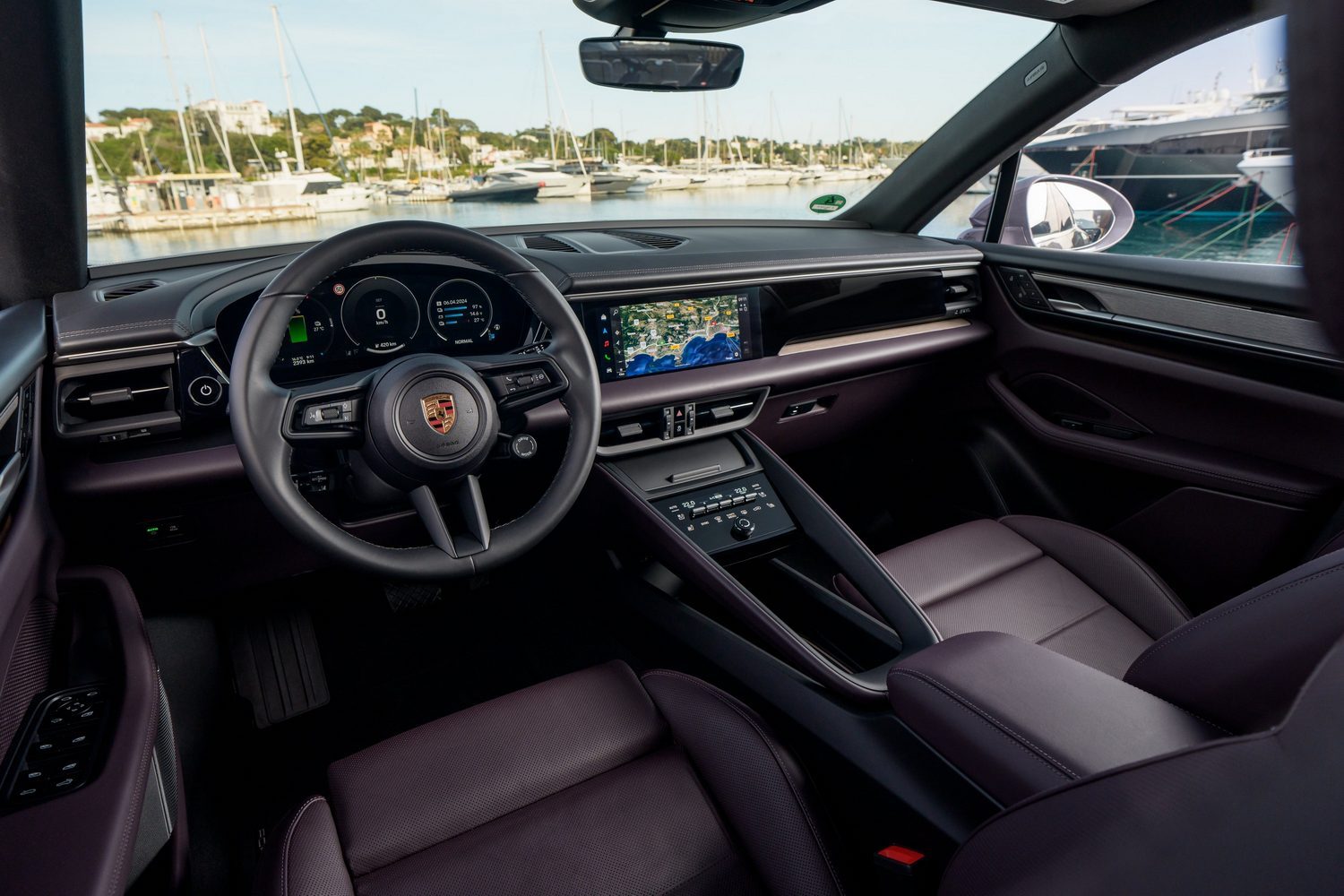
Inside, the Macan adopts the latest Porsche cabin style, using an upright dashboard with digital instruments, an integrated touchscreen and - praise be - physical switchgear for the climate control on the high centre console. This is notably spacious and practical, thanks in part to the position of the - ridiculously tactile and solid - drive selector on the dashboard. In front of the also-tactile air conditioning controls (there are normal hand-operated air vents, too, thankfully) is a beautifully-damped lid allowing access to a cooled wireless device charger.
Under the central armrest is a covered box, while the cupholders are mounted at a lower level with some extra storage in front of them. Because of their position they’re better able to hold taller bottles than most. Though we noticed the door bins up front are notably capacious, so you won’t have any excuse not to stay hydrated/caffeinated in the electric Macan.
A sense of extremely high quality pervades the whole cabin, wherever you’re seating, though the best seats are clearly up front, in terms of spaciousness as much as anything else. The outer two rear seats aren’t bad, and perfectly adequate for carrying humans of average size. While the electric Macan has a longer wheelbase than the petrol model, the Cayenne is considerably more spacious in the back. The centre rear occupant in the electric Macan has to put up with a small rise in the floor, too, which is a shame.
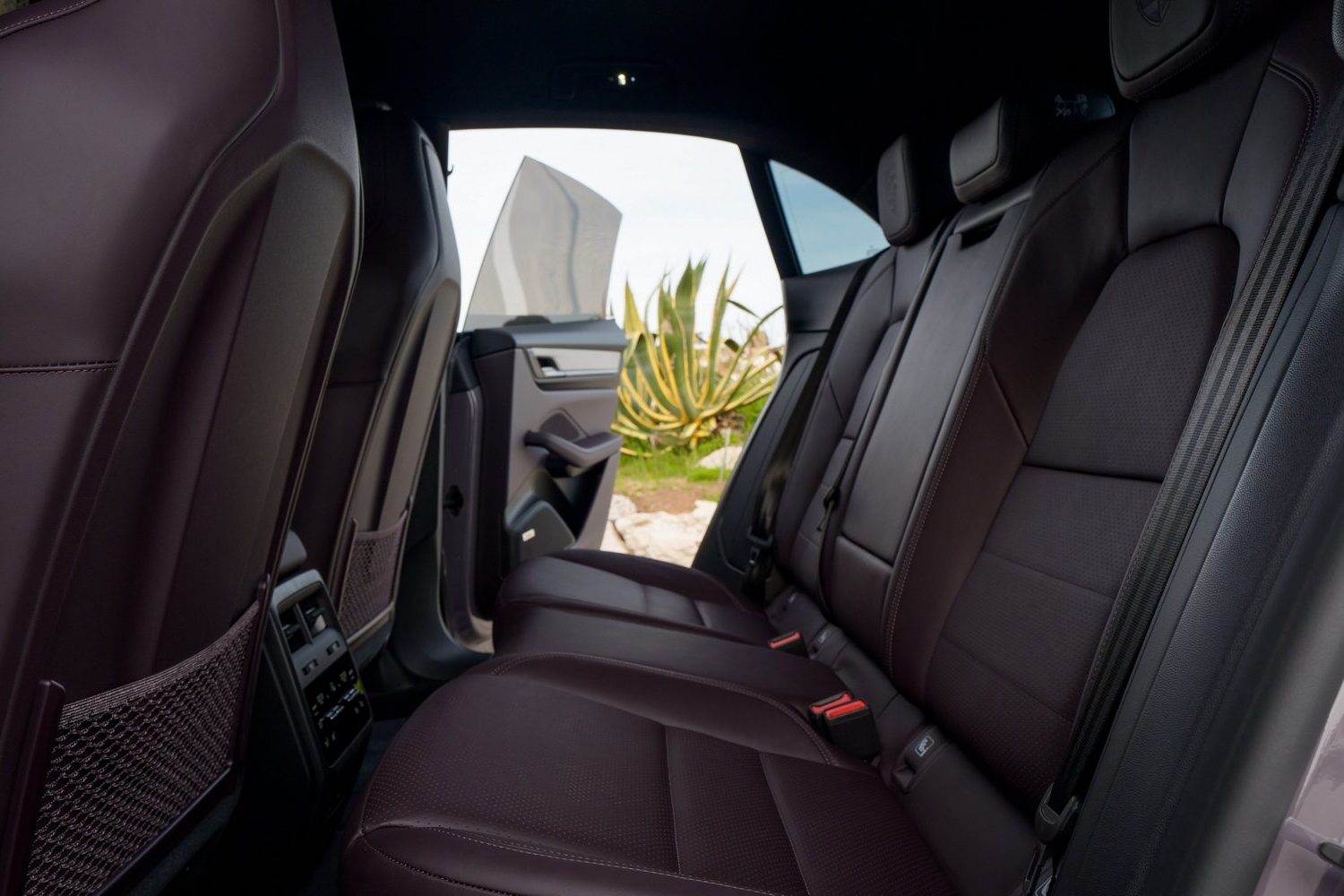
In truth, that’s one of the few negative things we have to say about the cabin. Behind the split-folding rear seats there’s even a good amount of boot space. The Macan 4 holds more than the Turbo at a rated 540 litres, and there’s a further 84 litres under the bonnet up front. Unlike most EVs that make their owners dig in the footwell for a lever to open the ‘frunk’, this can be done on the new key fob in the Macan or by using a swiping gesture if you’ve opted for the keyless entry system. This ease of access, and the admirable size of the space available up there, is sure to mean owners will regularly use this compartment - and not just for charging cables.
Driving it
Although we’re reviewing a car with the Porsche badge on its bonnet here, the electric Macan is one that has to work in everyday driving as much as it has to live up to the expectations of that hallowed crest when it comes to the entertaining the driver. Hence, our first few kilometres at the wheel were instructive as we waded through snarled-up traffic, all the while watchful for cyclists, buzzing moped riders and impatient drivers cutting in where they shouldn’t - quite the baptism for a 400hp electric Porsche with masses of instantaneous torque.
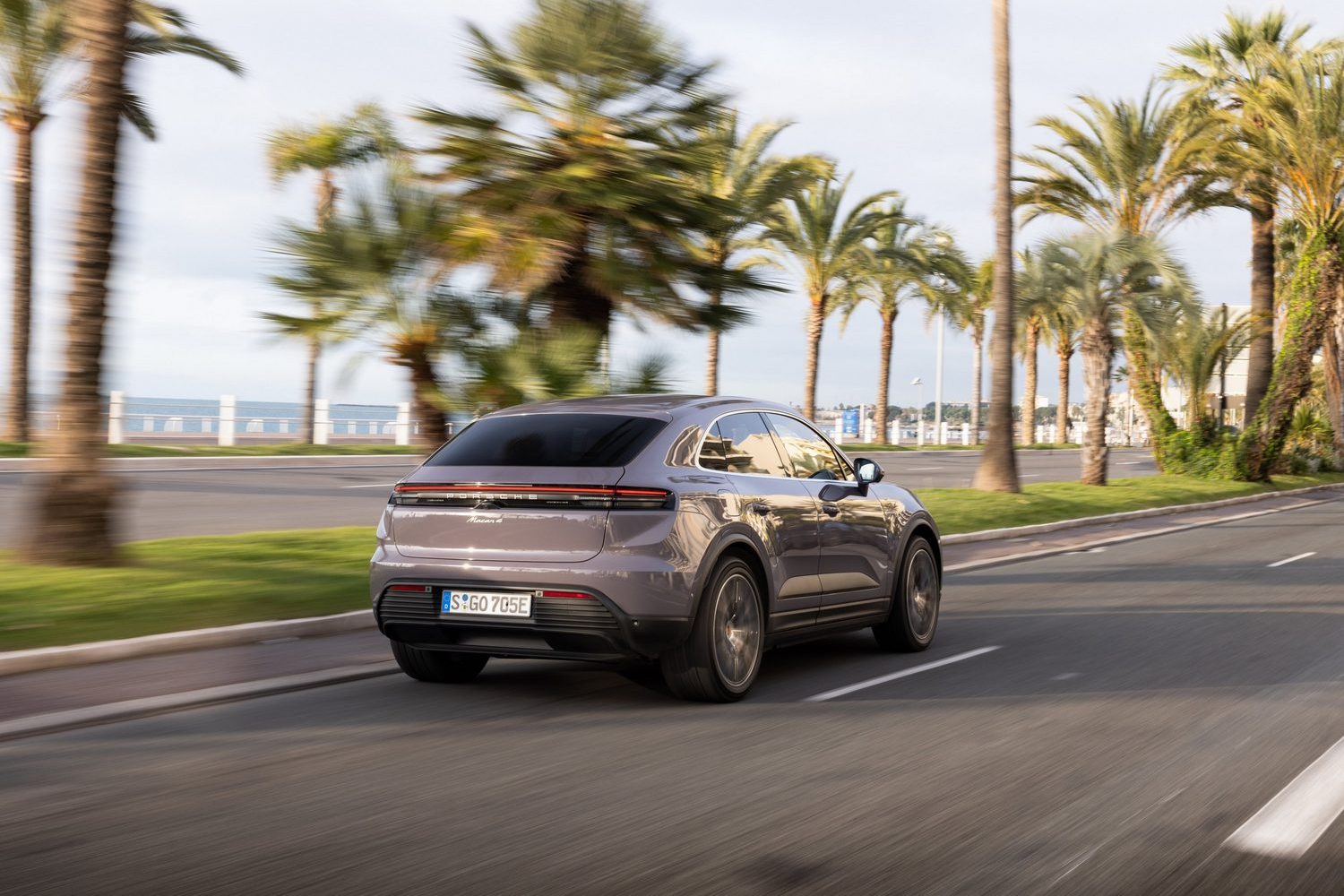
And yet all was serene and calm at the wheel, as the car made life very easy. Despite the slant of the front and rear windows, visibility is really good, while the sensor and camera systems make manoeuvring in tight quarters a breeze. Not only that, but the driving controls of the Macan are exquisitely well-judged. For starters, the perfectly round steering wheel feels good in your hands and is joined to a system without any slack in it. Yet it’s not so direct as to introduce nervousness into the car, either - it just feels natural.
Same thing with the brakes. The pedal modulation is nigh-on perfect, allowing the driver to smoothly come to a stop or let the car trickle along at walking pace. This ability is all the more impressive in an electric car as it uses brake energy regeneration as well as friction brakes to slow. Porsche has long been a master of ‘blending’ the two and it’s more or less impossible to detect which is in use at any given moment when the car is in its default settings. Porsche prefers to allow a car to ‘coast’ along instead of using ‘one-pedal’ driving techniques, though the driver can up the level of regeneration if required. Even then, it’s never as strong as it can be in some cars.
Nonetheless, when the driver presses the brake pedal, the car defaults to using recuperation and Porsche reckons some 98 per cent of total braking energy can be recovered in everyday driving. The brakes in the Macan continued to impress when we left the traffic behind and found some challenging mountain roads to explore.
The Macan 4, as the name suggests, has four-wheel drive thanks to the use of a motor on each of the axles. Combined, they produce up to 387hp during normal driving, plus a massive 650Nm of torque. Though on ‘overboost’ during the use of launch control, there’s up to 408hp produced, enabling a rapid 0-100km/h time of 5.2 seconds. In the Normal driving mode, the rear motor is predominantly used in the name of efficiency, though the front motor can be quickly summoned into action when needs be. Porsche calls the setup electronically controlled Porsche Traction Management (ePTM) and reckons its five times faster reacting than a conventional all-wheel-drive system.
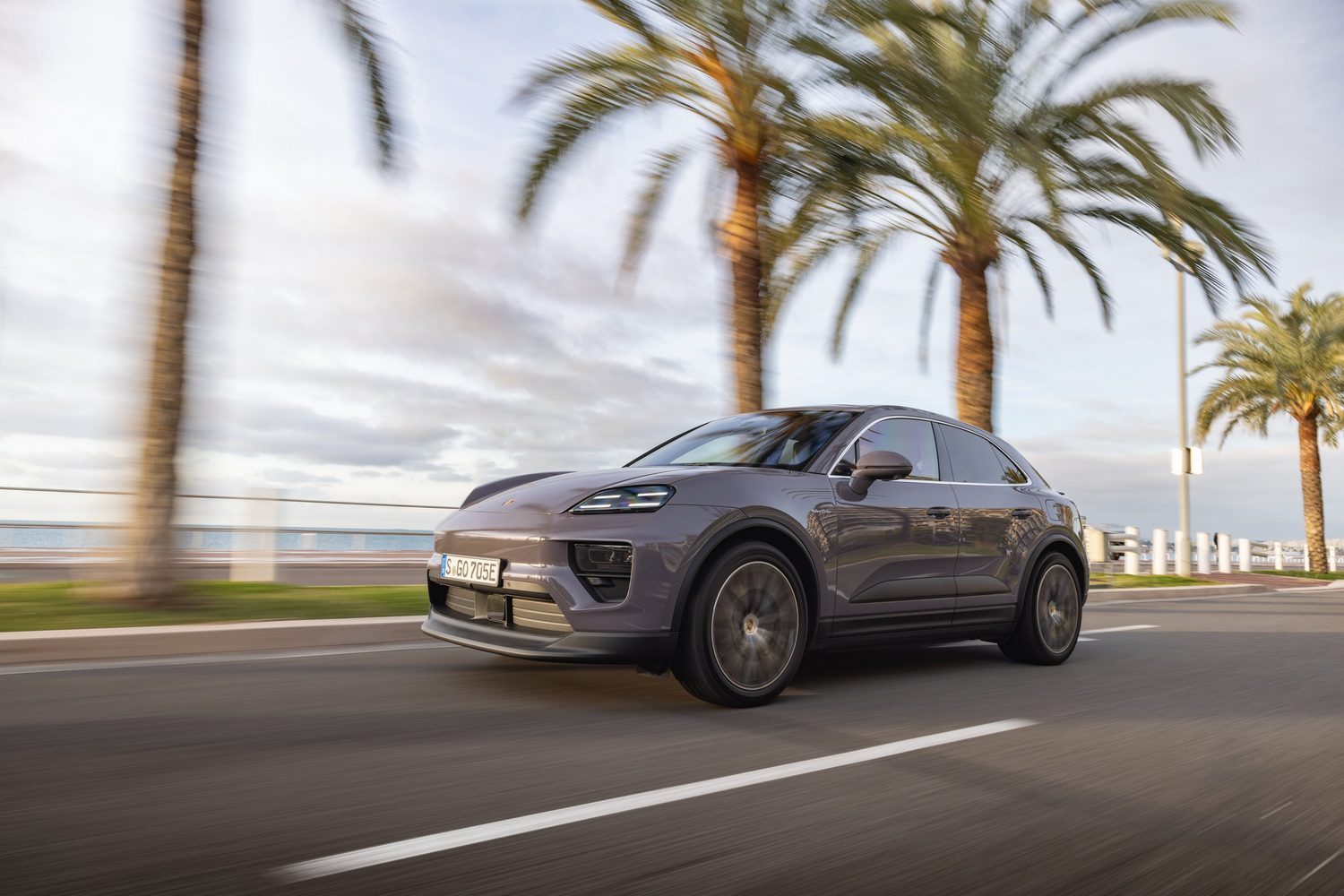
In a bid to optimise traction, the front motor is used more often in the Sport and Sport Plus driving modes, though in these settings we still found it remarkably easy to unstick the rear tyres when provoked on the exit of a well-sighted hairpin turn - despite a warm and dry road. This behaviour was mildly surprising at first, but not at all unnerving as the movement was well-communicated through the chassis and quite contained. It did, however, reveal that the fun side of the Macan’s character is very much present and correct.
Depending on how you specify your Macan, it could have a dual-personality. By default, the Macan 4 rides on steel springs and fixed-rate dampers, a combination we didn’t have the chance to try on this occasion. Buyers can add Porsche Active Suspension Management (PASM - the company’s name for adaptive damping) to the steel springs if they wish and we’d highly recommend it, especially as it’s the latest two-valve system employed in which rebound and compression are controlled individually.
Our test car featured the optional air suspension (go for that and PASM is included), which means self-levelling regardless of the car loading - and it can tow up to 2,000kg. It also means different ride heights to suit the driving modes. In the Sport Plus setting, for example, the Macan sits 30mm lower than standard, and Porsche says that this allows for a centre of gravity that’s as much as 140mm lower than the petrol model. If you twist the drive mode selector to Offroad, the car rises up 40mm.
We didn’t go off-road (and suspect few owners will), but we did try all the other settings on the road and surmised that, with the air suspension configuration, the Sport mode is the most satisfying. It results in more response and a notably sportier feeling to the car than the Normal level, without the harder edge of Sport Plus.
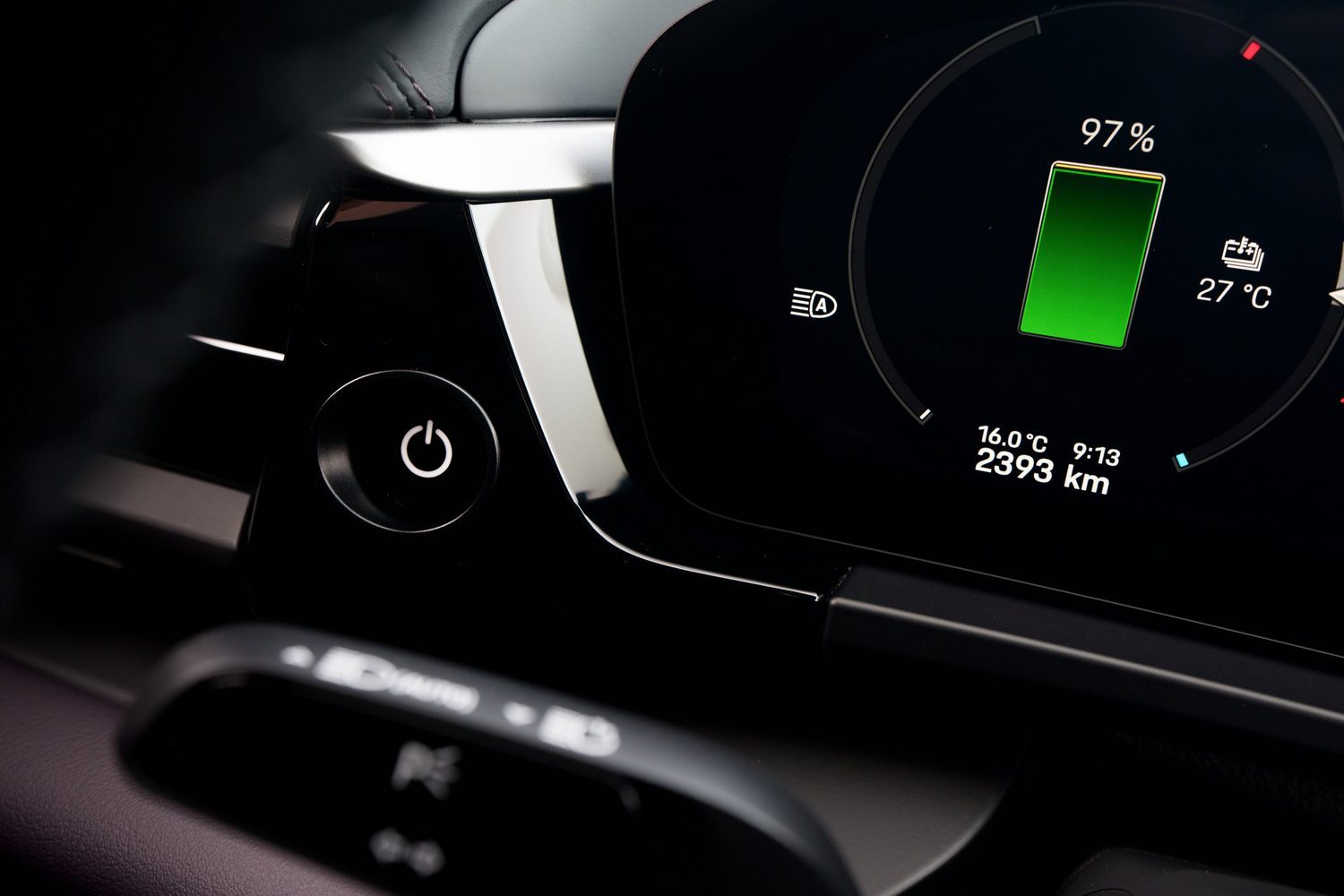
In none of the settings was the ride comfort what you’d call pillow-soft, but the Macan certainly plays dual roles better than ever and it’s a comfortable car to spend a lot of time in. When not chasing fun mountain roads, it proves to be quiet, too, which will please its owners.
As will its efficiency. Now, our test was hardly scientific, and conditions were warm and dry during our half day at the wheel, but despite having quite a lot of fun in the car, we managed to average a little better than 18kWh/100km - i.e. matching the official best energy consumption value this car is advertised with. Bear in mind that we didn’t spend very long at motorway speeds and that there was just one person in the car. Even so, that bodes well for a realistic range expectation of over 500 kilometres for most drivers.
What you get for your money
In Ireland, the electric Porsche Macan 4 starts at €92,609, while the Turbo model is from €128,696. This means the Macan significantly undercuts the Porsche Taycan. The Macan 4 is therefore the most affordable new Porsche there is.
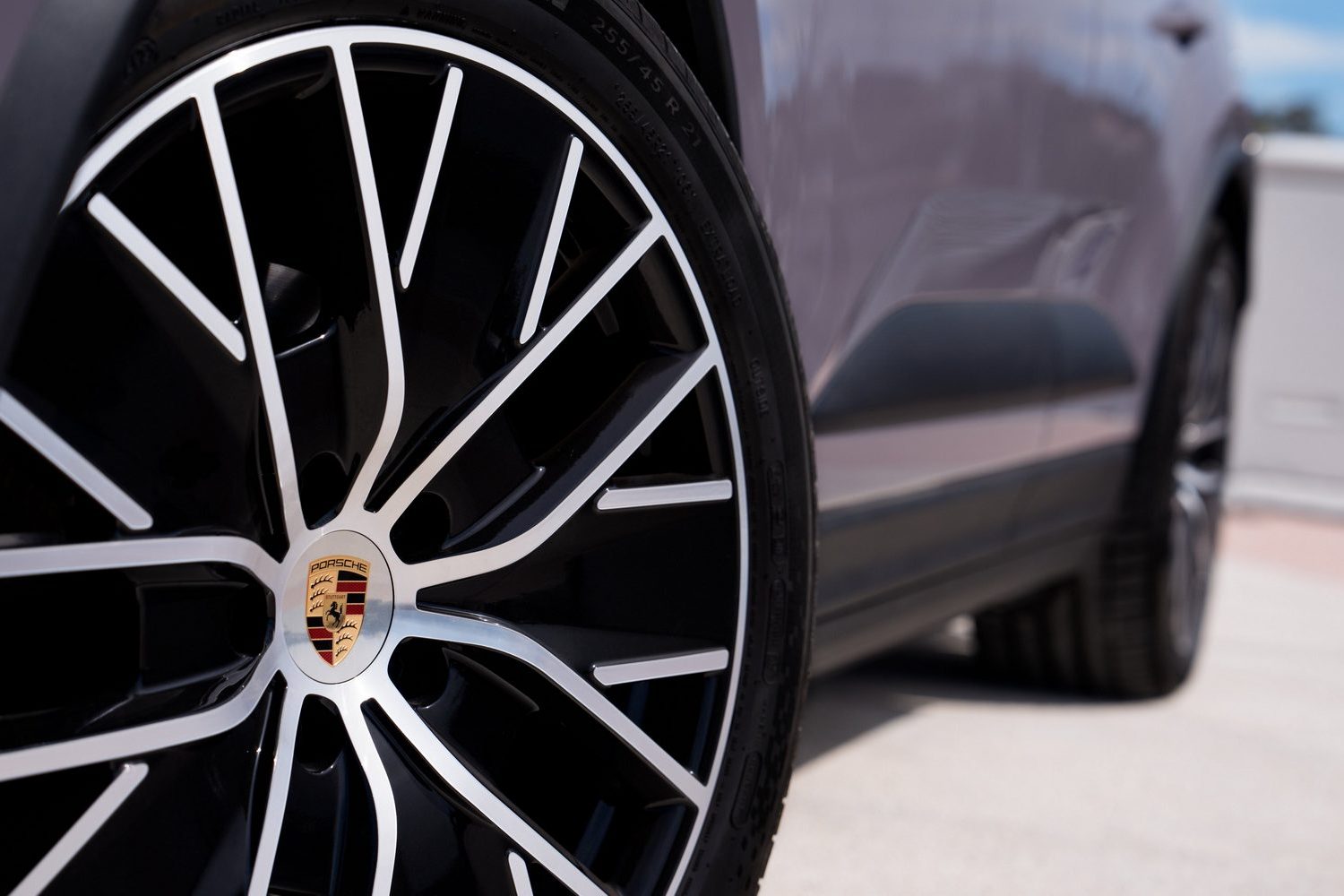
Despite this position on the Porsche ladder, the Macan 4 is well-equipped, coming as standard with 20-inch alloy wheels, a mix of leather and synthetic leather inside, electrically-adjusted and heated front seats, powered tailgate, LED lighting, electric-folding door mirrors, leather-trimmed steering wheel with Mode switch, ParkAssist with reversing camera, cruise control, dual-zone climate control, heat pump, ambient lighting, cooled wireless smartphone charger, Apple CarPlay and a huge suite of safety equipment. Of course, few Porsches leave the factory without options, and you can spend tens of thousands of Euros more if you get heavy-handed with the configurator.
All versions of the electric Macan get 270kW DC-charging capability, or up to 11kW on a suitable AC charger.
Summary
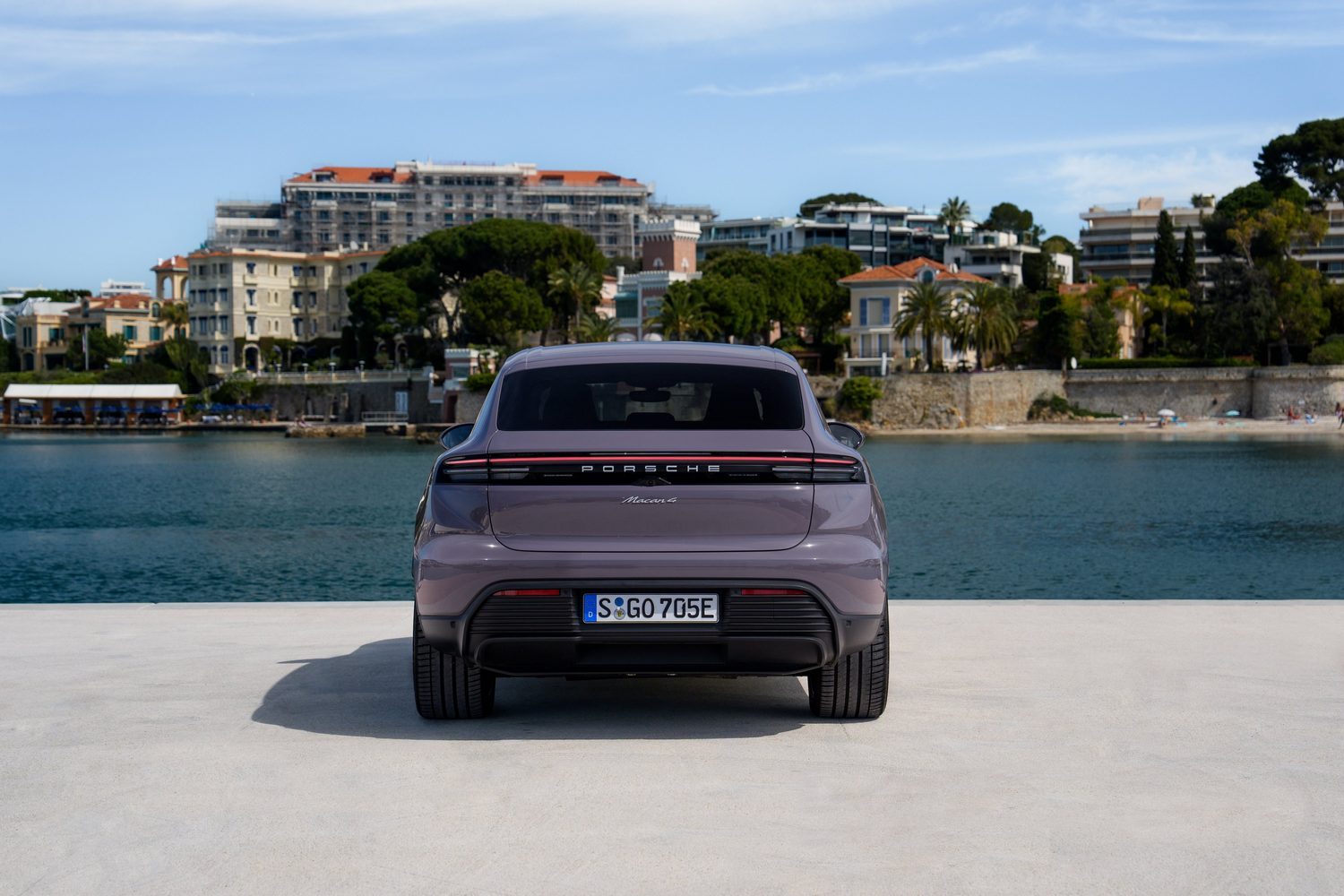
It’s bonkers to think that the most affordable Porsche in the line-up is a practical, high-quality SUV like the new Macan 4, with over 400hp at times, a long range between (fast) charges and a chassis that lives up to the famous crest on the bonnet. It may be the least expensive Porsche sold in Ireland, but it’s not short on appeal, and will undoubtedly widen the brand’s audience.

